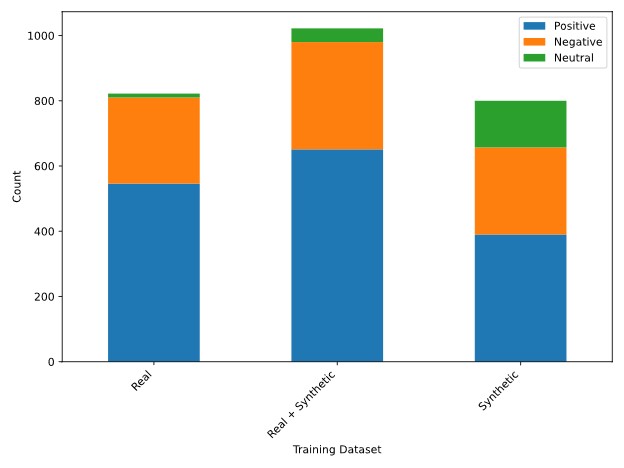In today’s data-driven investment environment, the quality, availability, and specificity of data can make or break a strategy. Yet investment professionals routinely face limitations: historical datasets may not capture emerging risks, alternative data is often incomplete or prohibitively expensive, and open-source models and datasets are skewed toward major markets and English-language content.
As firms seek more adaptable and forward-looking tools, synthetic data — particularly when derived from generative AI (GenAI) — is emerging as a strategic asset, offering new ways to simulate market scenarios, train machine learning models, and backtest investing strategies. This post explores how GenAI-powered synthetic data is reshaping investment workflows — from simulating asset correlations to enhancing sentiment models — and what practitioners need to know to evaluate its utility and limitations.
What exactly is synthetic data, how is it generated by GenAI models, and why is it increasingly relevant for investment use cases?
Consider two common challenges. A portfolio manager looking to optimize performance across varying market regimes is constrained by historical data, which can’t account for “what-if” scenarios that have yet to occur. Similarly, a data scientist monitoring sentiment in German-language news for small-cap stocks may find that most available datasets are in English and focused on large-cap companies, limiting both coverage and relevance. In both cases, synthetic data offers a practical solution.
What Sets GenAI Synthetic Data Apart—and Why It Matters Now
Synthetic data refers to artificially generated datasets that replicate the statistical properties of real-world data. While the concept is not new — techniques like Monte Carlo simulation and bootstrapping have long supported financial analysis — what’s changed is the how.
GenAI refers to a class of deep-learning models capable of generating high-fidelity synthetic data across modalities such as text, tabular, image, and time-series. Unlike traditional methods, GenAI models learn complex real-world distributions directly from data, eliminating the need for rigid assumptions about the underlying generative process. This capability opens up powerful use cases in investment management, especially in areas where real data is scarce, complex, incomplete, or constrained by cost, language, or regulation.
Common GenAI Models
There are different types of GenAI models. Variational autoencoders (VAEs), generative adversarial networks (GANs), diffusion-based models, and large language models (LLMs) are the most common. Each model is built using neural network architectures, though they differ in their size and complexity. These methods have already demonstrated potential to enhance certain data-centric workflows within the industry. For example, VAEs have been used to create synthetic volatility surfaces to improve options trading (Bergeron et al., 2021). GANs have proven useful for portfolio optimization and risk management (Zhu, Mariani and Li, 2020; Cont et al., 2023). Diffusion-based models have proven useful for simulating asset return correlation matrices under various market regimes (Kubiak et al., 2024). And LLMs have proven useful for market simulations (Li et al., 2024).
Table 1. Approaches to synthetic data generation.
| Method | Types of data it generates | Example applications | Generative? |
| Monte Carlo | Time-series | Portfolio optimization, risk management | No |
| Copula-based functions | Time-series, tabular | Credit risk analysis, asset correlation modeling | No |
| Autoregressive models | Time-series | Volatility forecasting, asset return simulation | No |
| Bootstrapping | Time-series, tabular, textual | Creating confidence intervals, stress-testing | No |
| Variational Autoencoders | Tabular, time-series, audio, images | Simulating volatility surfaces | Yes |
| Generative Adversarial Networks | Tabular, time-series, audio, images, | Portfolio optimization, risk management, model training | Yes |
| Diffusion models | Tabular, time-series, audio, images, | Correlation modelling, portfolio optimization | Yes |
| Large language models | Text, tabular, images, audio | Sentiment analysis, market simulation | Yes |
Evaluating Synthetic Data Quality
Synthetic data should be realistic and match the statistical properties of your real data. Existing evaluation methods fall into two categories: quantitative and qualitative.
Qualitative approaches involve visualizing comparisons between real and synthetic datasets. Examples include visualizing distributions, comparing scatterplots between pairs of variables, time-series paths and correlation matrices. For example, a GAN model trained to simulate asset returns for estimating value-at-risk should successfully reproduce the heavy-tails of the distribution. A diffusion model trained to produce synthetic correlation matrices under different market regimes should adequately capture asset co-movements.
Quantitative approaches include statistical tests to compare distributions such as Kolmogorov-Smirnov, Population Stability Index and Jensen-Shannon divergence. These tests output statistics indicating the similarity between two distributions. For example, the Kolmogorov-Smirnov test outputs a p-value which, if lower than 0.05, suggests two distributions are significantly different. This can provide a more concrete measurement to the similarity between two distributions as opposed to visualizations.
Another approach involves “train-on-synthetic, test-on-real,” where a model is trained on synthetic data and tested on real data. The performance of this model can be compared to a model that is trained and tested on real data. If the synthetic data successfully replicates the properties of real data, the performance between the two models should be similar.
In Action: Enhancing Financial Sentiment Analysis with GenAI Synthetic Data
To put this into practice, I fine-tuned a small open-source LLM, Qwen3-0.6B, for financial sentiment analysis using a public dataset of finance-related headlines and social media content, known as FiQA-SA[1]. The dataset consists of 822 training examples, with most sentences classified as “Positive” or “Negative” sentiment.
I then used GPT-4o to generate 800 synthetic training examples. The synthetic dataset generated by GPT-4o was more diverse than the original training data, covering more companies and sentiment (Figure 1). Increasing the diversity of the training data provides the LLM with more examples from which to learn to identify sentiment from textual content, potentially improving model performance on unseen data.
Figure 1. Distribution of sentiment classes for both real (left), synthetic (right), and augmented training dataset (middle) consisting of real and synthetic data.

Table 2. Example sentences from the real and synthetic training datasets.
| Sentence | Class | Data |
| Slump in Weir leads FTSE down from record high. | Negative | Real |
| AstraZeneca wins FDA approval for key new lung cancer pill. | Positive | Real |
| Shell and BG shareholders to vote on deal at end of January. | Neutral | Real |
| Tesla’s quarterly report shows an increase in vehicle deliveries by 15%. | Positive | Synthetic |
| PepsiCo is holding a press conference to address the recent product recall. | Neutral | Synthetic |
| Home Depot’s CEO steps down abruptly amidst internal controversies. | Negative | Synthetic |
After fine-tuning a second model on a combination of real and synthetic data using the same training procedure, the F1-score increased by nearly 10 percentage points on the validation dataset (Table 3), with a final F1-score of 82.37% on the test dataset.
Table 3. Model performance on the FiQA-SA validation dataset.
| Model | Weighted F1-Score |
| Model 1 (Real) | 75.29% |
| Model 2 (Real + Synthetic) | 85.17% |
I found that increasing the proportion of synthetic data too much had a negative impact. There is a Goldilocks zone between too much and too little synthetic data for optimum results.
Not a Silver Bullet, But a Valuable Tool
Synthetic data is not a replacement for real data, but it is worth experimenting with. Choose a method, evaluate synthetic data quality, and conduct A/B testing in a sandboxed environment where you compare workflows with and without different proportions of synthetic data. You might be surprised at the findings.
You can view all the code and datasets on the RPC Labs GitHub repository and take a deeper dive into the LLM case study in the Research and Policy Center’s “Synthetic Data in Investment Management” research report.
[1] The dataset is available for download here: https://huggingface.co/datasets/TheFinAI/fiqa-sentiment-classification












